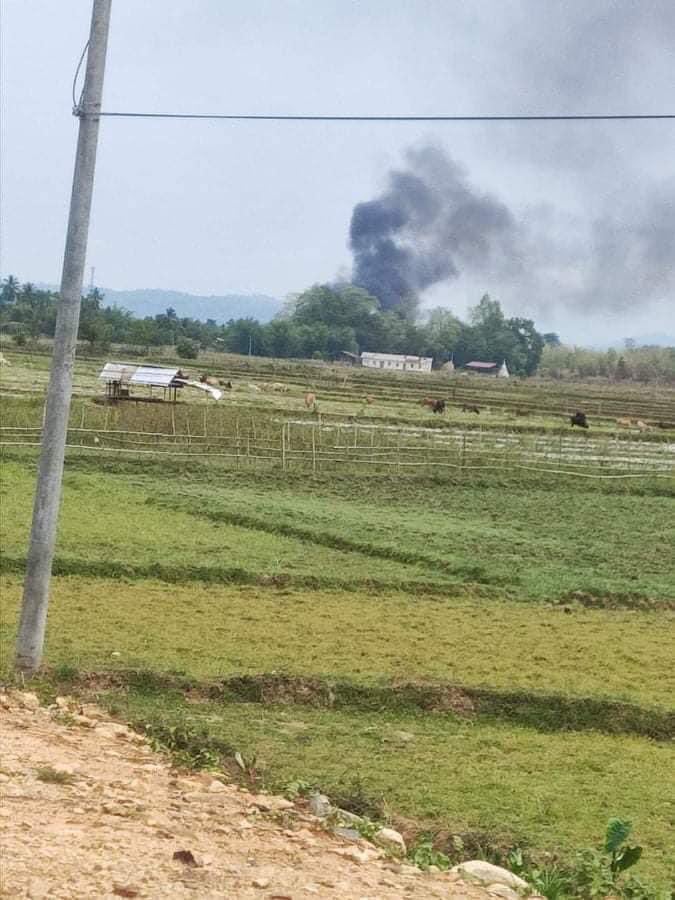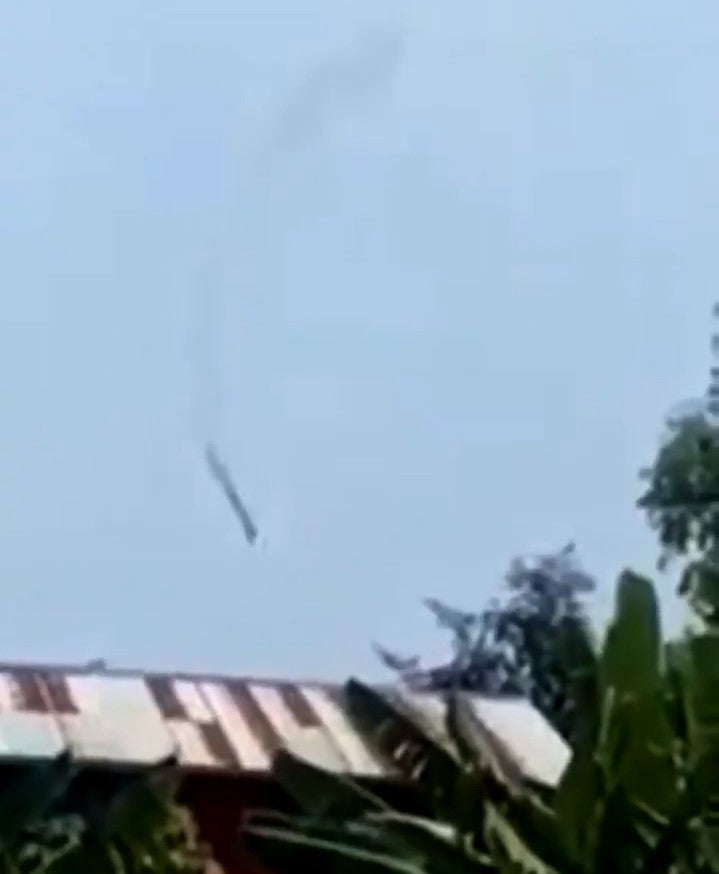Kachin Independence Army Claims Downing Of Tatmadaw Mi-35 Attack Helicopter
The Kachin Independence Army claimed today that it had shot down a Mi-35 attack helicopter of the Myanmar Air Force during heavy fighting in the north of the country.
Colonel Naw Bu, spokesman for the KIA, said that the shootdown occurred around 10:20 AM local time, in a village near the town of Momauk, Kachin State. The attack helicopter had attacked KIA positions around Momauk alongside two jet aircraft earlier that morning, with the Colonel claiming that the jet aircraft swiftly retreated following the downing of the Mi-35.
Despite continued cellular internet blockages imposed since the 1 February coup, videos of the shootdown have since begun circulating online, showing the Mi-35 flying over the area shortly before it is hit and begins losing altitude. A local resident who spoke with the Irrawaddy Times said that the Mi-35 was hit near the tail rotor, and landed near Konglaw village. Another photograph and video of the smoke plume from a crash site just out of camera view have surfaced as well.
While the KIA spokesman would not detail what weapons were used to down the Mi-35, the footage strongly suggests a shoulder-fired Man-portable air-defense system or MANPADS. While it is considered to be one of the strongest ethnic rebel armies in Myanmar, the KIA was not previously known to operate MANPADS. However, MANPADS are known to be present in northern Myanmar, with a Chinese-made FN-6 found among a cache of weapons abandoned in 2019 by rebels of the Ta’ang National Liberation Army in Shan state, which borders Kachin state to the south. While the Ta’ang National Liberation Army was believed to have been supplied with the missile by the United Wa State Army, courtesy of the UWSA’s close ties with China that have kept it flush with sophisticated equipment, the source for the apparent KIA MANPADs is less clear, although unsurprising given how frequently weaponry changes hands between non-state actors in contemporary conflicts.

The Myanmar Air Force is believed to have procured no less than nine Mi-35s, with deliveries starting in 2010. Their first combat use came in 2012 against the KIA, again alongside jet aircraft, the first time the Tatmadaw had deployed air power against any of the ethnic rebel groups in the country. One Mi-35 had been previously shot down in January 2013 by the KIA, killing the three crew members on board. At the time, Myanmar’s military claimed that the Hind had crashed following an engine failure.
Combat near Momauk has been centered around the military base at Alaw Bum, located on a hill near the border with China. The KIA took the base from the Tatmadaw on 24 April, as part of a larger offensive by various ethnic rebel groups carried out in the wake of the military coup and subsequent crackdowns on protests against the military junta that now rules Myanmar. At least 5,000 civilians from ten villages in the area have since been displaced as fighting rages.
While the loss of the Mi-35 and the confirmation of a MANPADS threat to its helicopters and low flying aircraft will force the Tatmadaw to reevaluate its tactics against the KIA and other rebel groups in the region, its effect on the Tatmadaw’s campaigns of aerial terror against rural civilians and atrocities against urban protesters is not immediately clear. At least seven protesters were killed after “Global Myanmar Spring Revolution” protests that took place in major cities and towns on Sunday were fired upon by Tatmadaw forces. With a series of unexplained rocket attacks and small explosions now striking Tatmadaw installations previously thought secure, it almost seems as if its campaign of repression is now starting to get a less civil reaction in areas previously thought to have minimal rebel presence.

